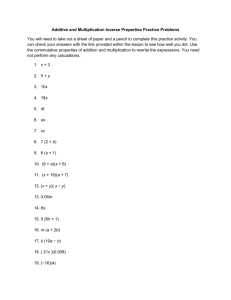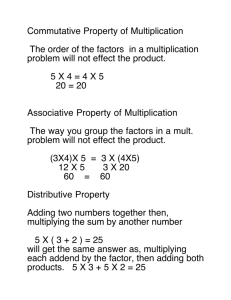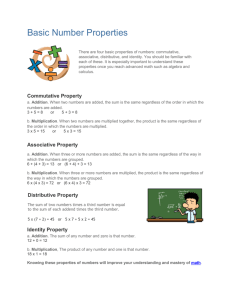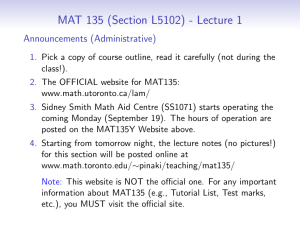1.2 Properties of Real Numbers
advertisement
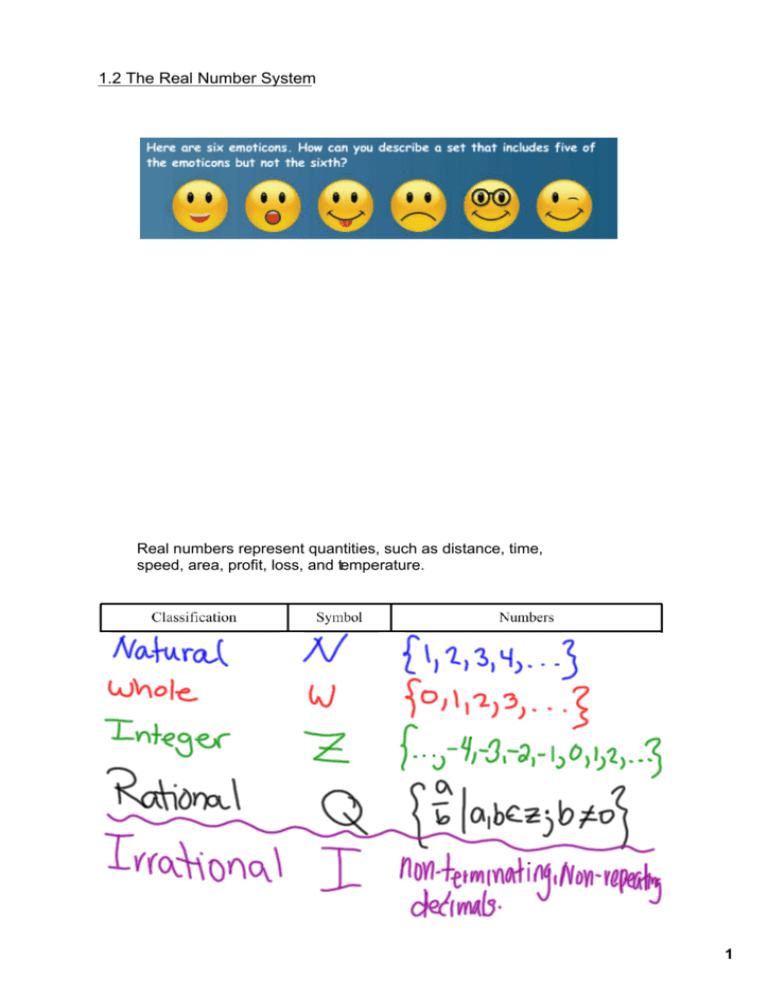
1.2 The Real Number System Real numbers represent quantities, such as distance, time, speed, area, profit, loss, and temperature. 1 The Real Number system can be diagramed in a way to show how different types of numbers are subsets of each other. Example 1 Classify the following numbers in as specific way as possible: √5, √3, ½, 1/3, 2/7, 0, ­6, 1 2 Field ­ the set of real numbers and the two binary operations of addition & multiplication that have the properties of: closure, commutative, associative, identity, inverse, and distributive. To be a field, it must hold true for ALL of these properties. There are 11 Field Properties of the Set of Real Numbers Let a, b, and c be real numbers. Closure Addition Multiplication Commutative Addition Multiplication 3 Associative Addition Multiplication Identity Addition Multiplication Addition Multiplication Inverse Distributive 4 Example 2: Name the field property of the real number system illustrated in each statement. a. 2πr = 2rπ b. 0.625(1.6) = 1 c. 1 + 0 is a real number d. 2[3.27 + (-3.27)] = 2(0) Example 4: Determine which of the subsets of real numbers (natural numbers, whole numbers, integers, rational numbers, irrational numbers) are closed under subtraction. 5 Example 5: Are the following statements true or false? If false, state a counterexample. a) The rational numbers are closed under multiplication. b) The irrational numbers are closed under addition. Example 6: Under the operations of addition and multiplication, determine which field properties DO NOT hold for each set. Get an example. a) Positive even integers 6 b) Integers divisible by 5 The field properties, along with the properties of equality can be used to prove theorems about real numbers. Properties of Equality 7 Example 7 Name the property of equality that illustrated in each statement. a. If 2.5 = 2 1/2 and 2 1/2 = 5/2, then 2.5 = 5/2 b. 5 = 5 c. If a = b and 9 + a = 15, then 9 + b = 15 d. If 1/2 = 0.5, then 0.5 = 1/2 8

